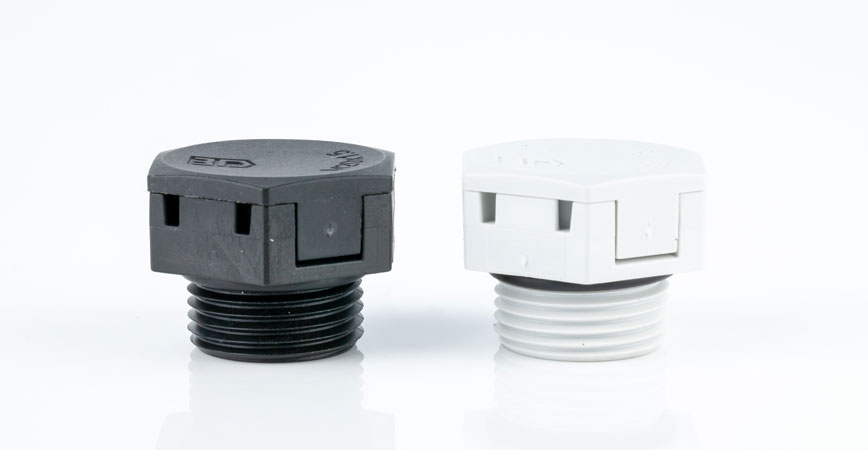Venting elements: how and when do you use them?

Posted on 23 January 2024
Condensation can form during temperature and pressure changes in an environment / space, including in electronics housings. This is something you want to prevent, because in a worst case scenario, this condensation can cause a short circuit. To prevent condensation, you can protect your closed electronics housings with venting elements. How do they work, and when do you use them? Read it in this blog!
What is a venting element?
Venting elements are valves mode of polyamide 6.6, that can be placed into the knockouts of a junction box using the screw thread. Essentially, the venting element is installed in the same way in which you would install a cable gland. The junction box remains, with the valve, a hermetically sealed space.
How do venting elements work?
Venting elements ensure continued ventilation and adjustment of the pressure inside of a junction box, due to the PES membrane in the valve. This membrane is watertight and oil repellent.
Note: Venting elements cannot be used underwater. Even when the valve is clogged / blocked by dust, it loses its function.
When do you use venting elements?
Venting elements are mostly used in environments where there is a risk of condensation forming in the electronics housing. This can, for example, be in a warm environment or in a high humidity environment.









